What Is a Title Tag?
A title tag (or <title> tag) is an HTML element that provides a webpage title for search engines and internet browsers to use. It can appear in search engine results and link previews for the page.
For example, this is a title tag in HTML:

Here’s how it displays in a browser tab on Google Chrome:

On a Google search results page:
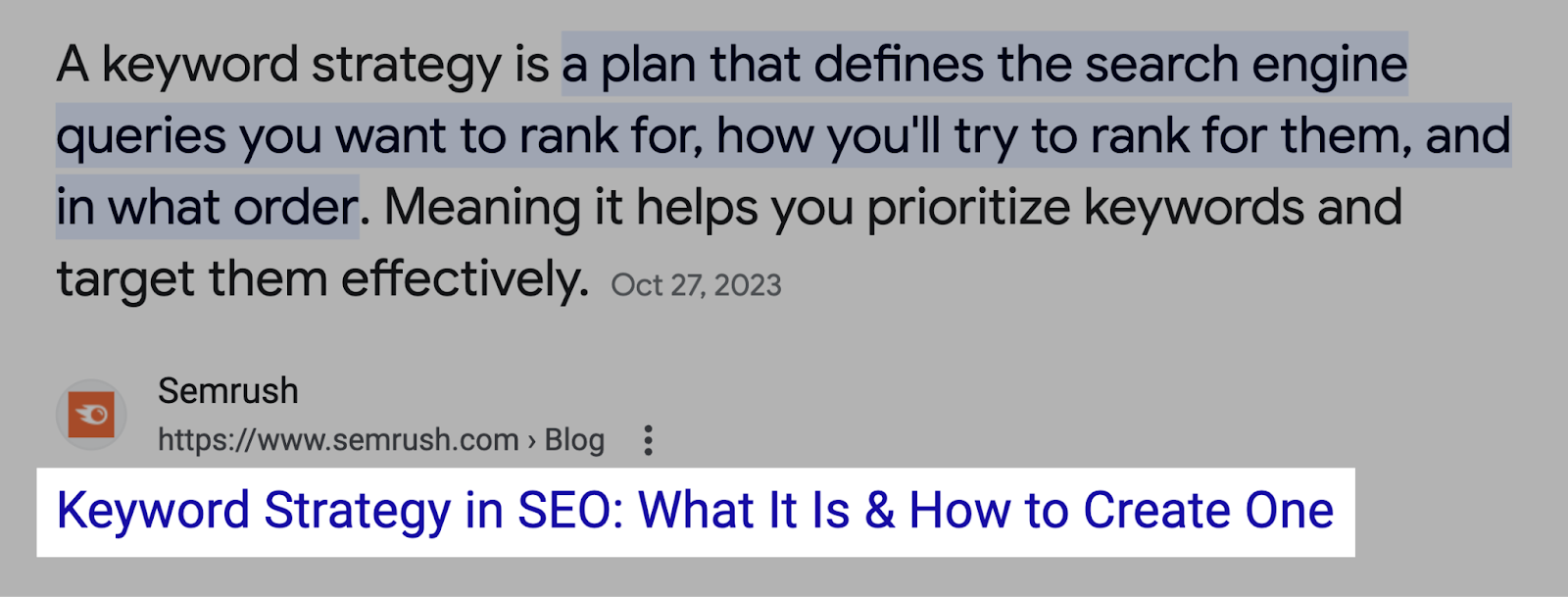
And in a link preview on Slack:
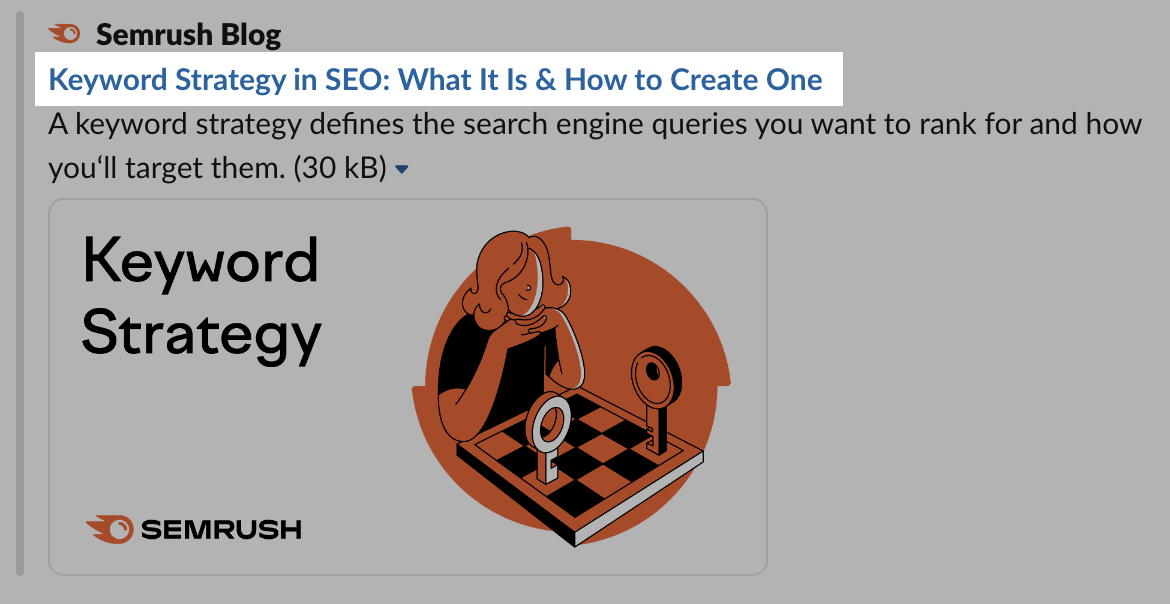
Why Are Title Tags Important?
Let’s explore the four main reasons that title tags are important, particularly in SEO:
Title Tags Can Affect Your SEO Rankings
Title tags can affect your SEO rankings (i.e., unpaid visibility in search engine results).
Because search engines like Google use them to understand what your page is about. And how relevant it is to each user query.
For example, if your title tag doesn’t contain “peach cobbler recipe” or a close variation, you’ll struggle to rank highly for associated search terms. Because if it isn’t mentioned in the title, how relevant can it be?
Title Tags Can Appear in Search Results
Google commonly uses title tags as title links. These are the clickable titles in search engine results pages (SERPs).
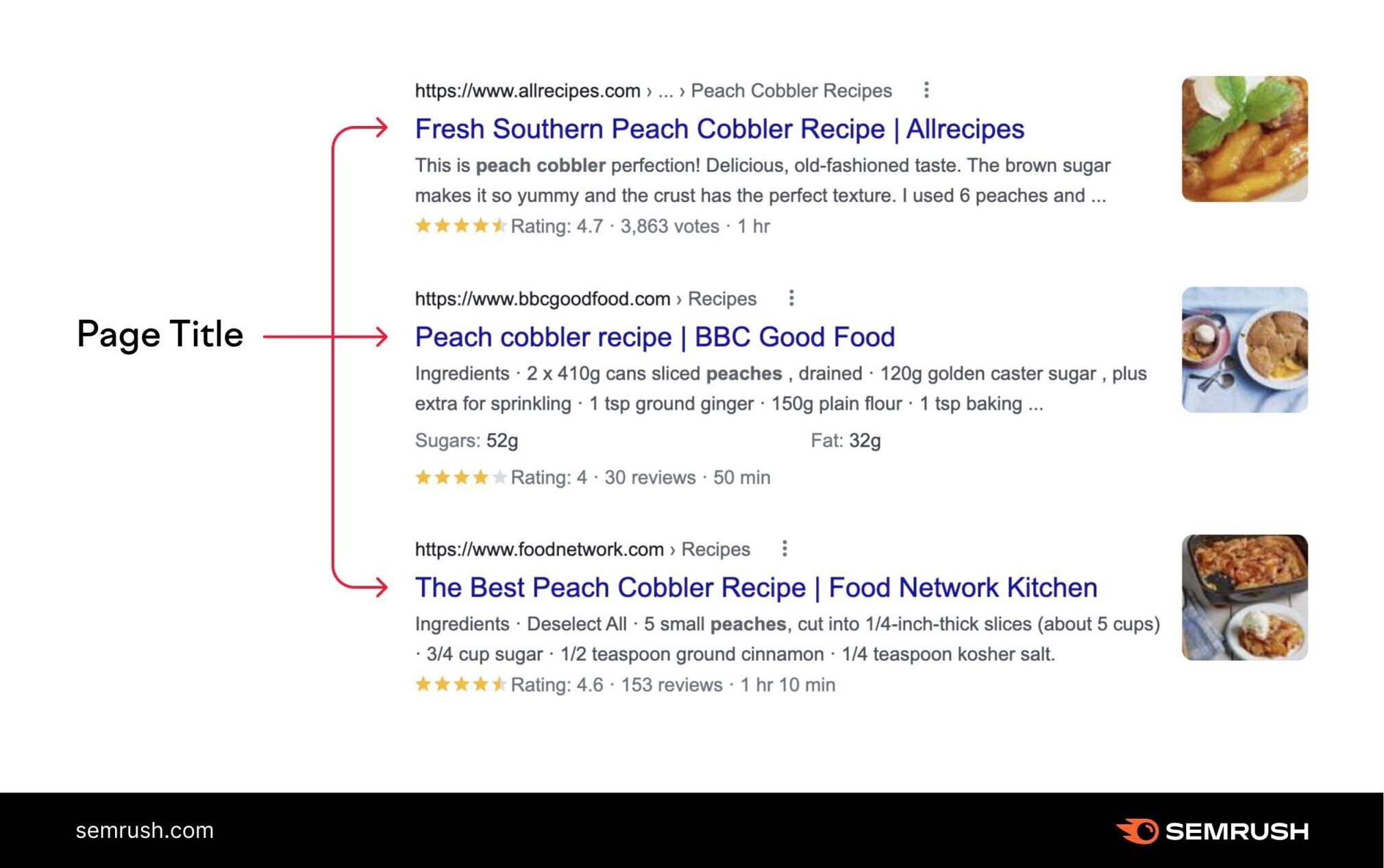
The title link can have a significant impact on the number of clicks you get (or your click-through rate). And searchers’ perception of your brand.
Title Tags Can Appear in Link Previews
Title tags can appear in link previews on social media sites, instant messaging apps, etc.
Like this:
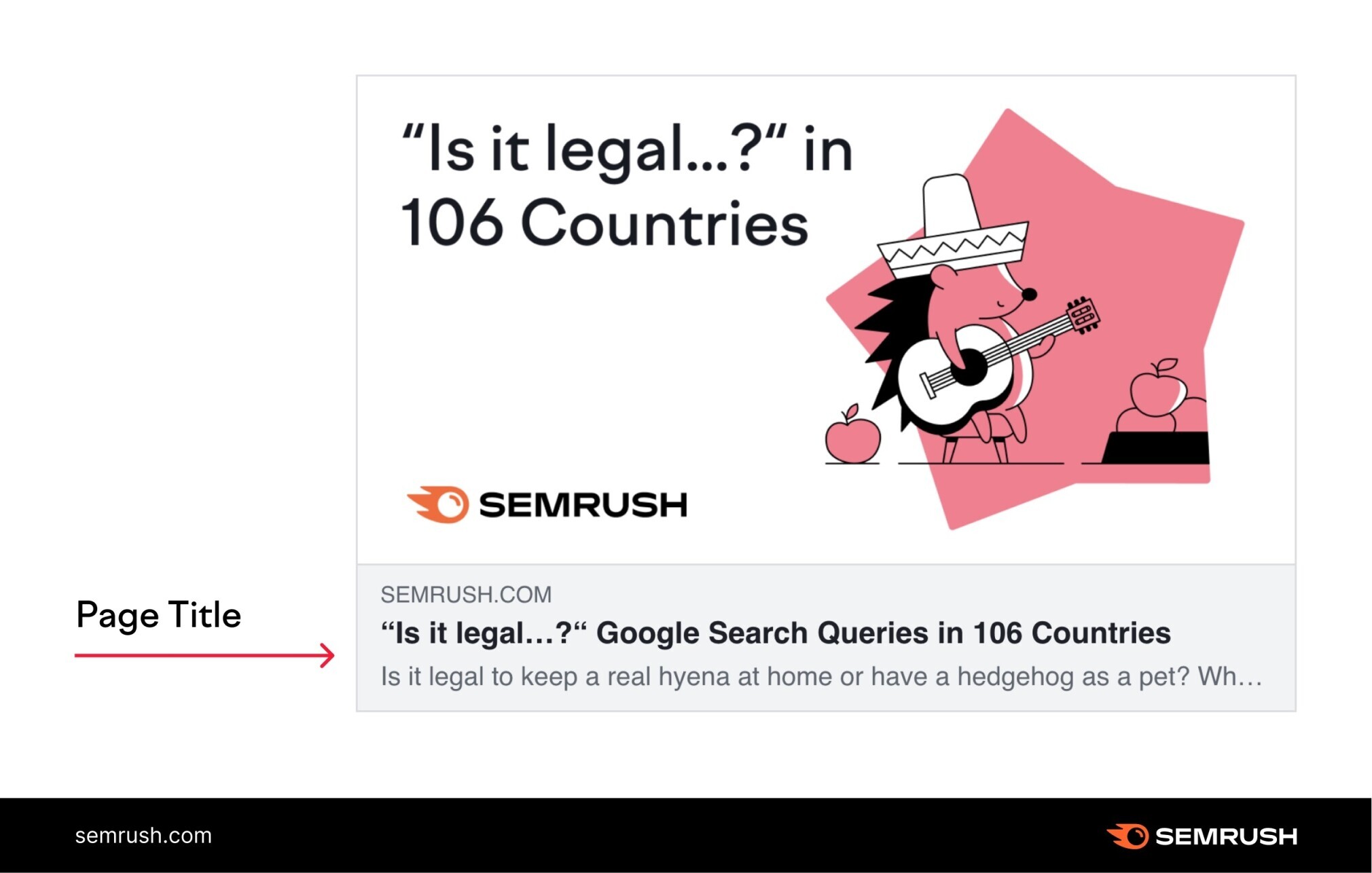
If the title is missing or poorly optimized, users may be less likely to click through.
Title Tags Appear in Browser Tabs
Title tags tell a browser how to display the page title in tabs. This helps users navigate to the correct page when they have multiple tabs open.
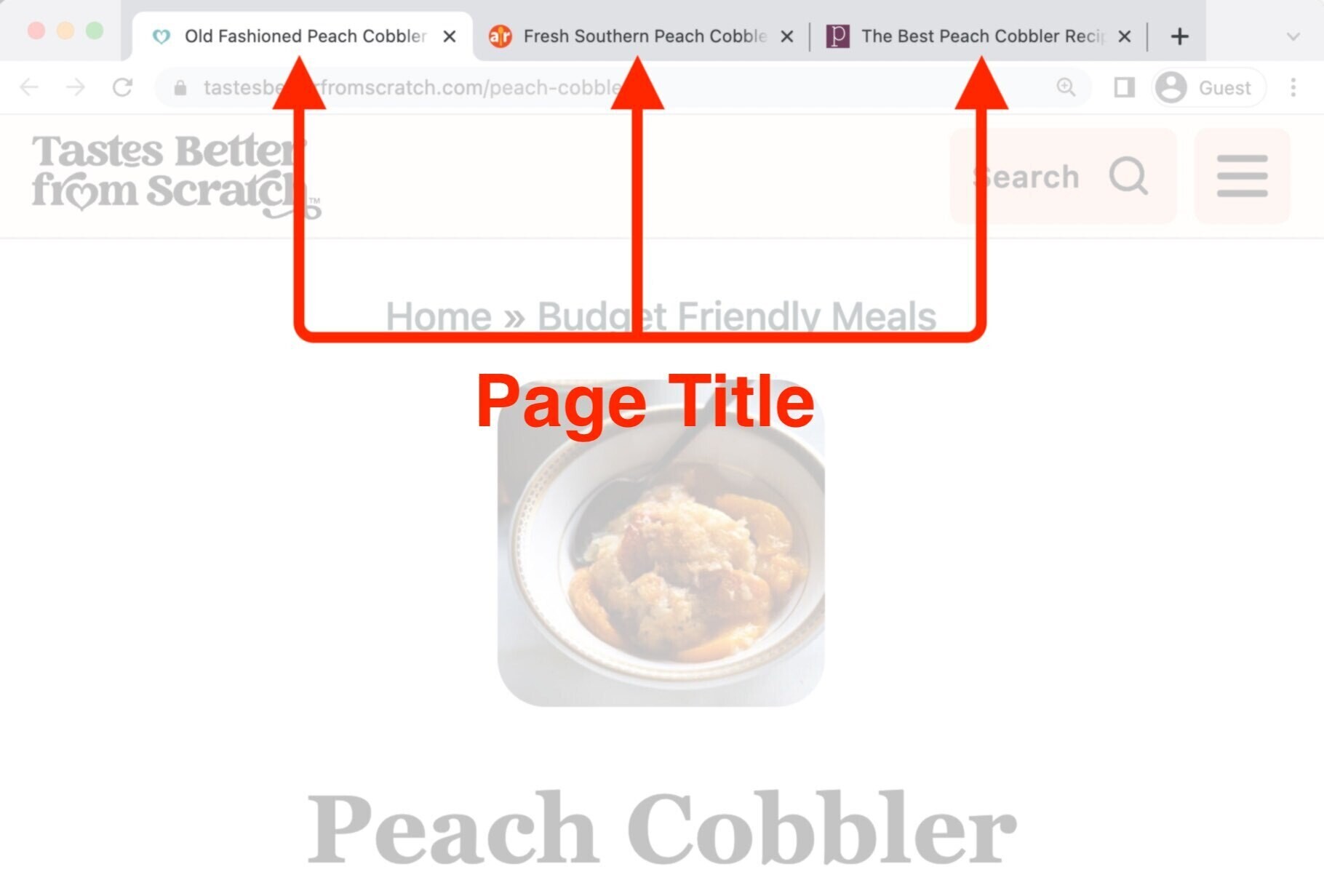
Title Tag Best Practices
Optimizing title tags can help you rank higher, get more traffic, and improve user experience.
With these best practices, you can learn how to write a title tag that performs well:
Optimize Title Tag Length
Generally, you should aim for a title tag length between 50 and 60 characters.
There’s no strict title tag character limit. But if your title tag is too long (in terms of pixels), Google may truncate it in the SERP.
Like this:

This may confuse or frustrate your users, making them less likely to click your result.
If your title tag is too short, you might struggle to describe your page accurately.
Here are some shorter page title examples that don’t get cut off:

To keep your titles brief:
- Avoid typing your title in all caps. Uppercase letters take up extra space and could cause your title to get cut off. They can also be harder to read.
- Remove your brand name unless it’s necessary
- Use symbols to save space (e.g., “&” instead of “and”)
- Since they’re narrower, consider using colons (“:”) or pipes (“|”) as separators, rather than hyphens (“-”) or dashes (“–” / “—”)
Make Every Title Tag Unique
Unique titles help search engines determine each page’s unique purpose and may influence users to click.
Imagine you ran an ecommerce website that had the same general title for every single page, like “Furniture Store and Home Decor”:

If a user specifically searched for coffee tables, the generic title may suggest that this page won’t match their search (even if it does). After all, “coffee tables” doesn’t appear anywhere in the title.
This particular page is about coffee tables. So, including that keyword makes the page title more intuitive for the reader and the search engine.
Like this:

Target One Primary Keyword
It's best to include only one target keyword (search query you want the page to rank for) in a given page's title tag.
Stuffing lots of keywords into a single page title can hurt that page's rankings. Because it’s spammy.
It can also confuse users, making them less likely to click through to your page.
For example, this page title crams in three different keywords: "weighted blankets," "blankets," and "affordable weighted blankets":

But you can cover other relevant terms. Just make sure to do it more naturally.
Like this:

Analyze the SERP
SERP analysis helps you understand what kinds of titles work well. And craft a title that will stand out.
For example, let’s look at the SERP for “interior design trends.”
We can see that most titles include the year, so the user knows the content’s up to date.
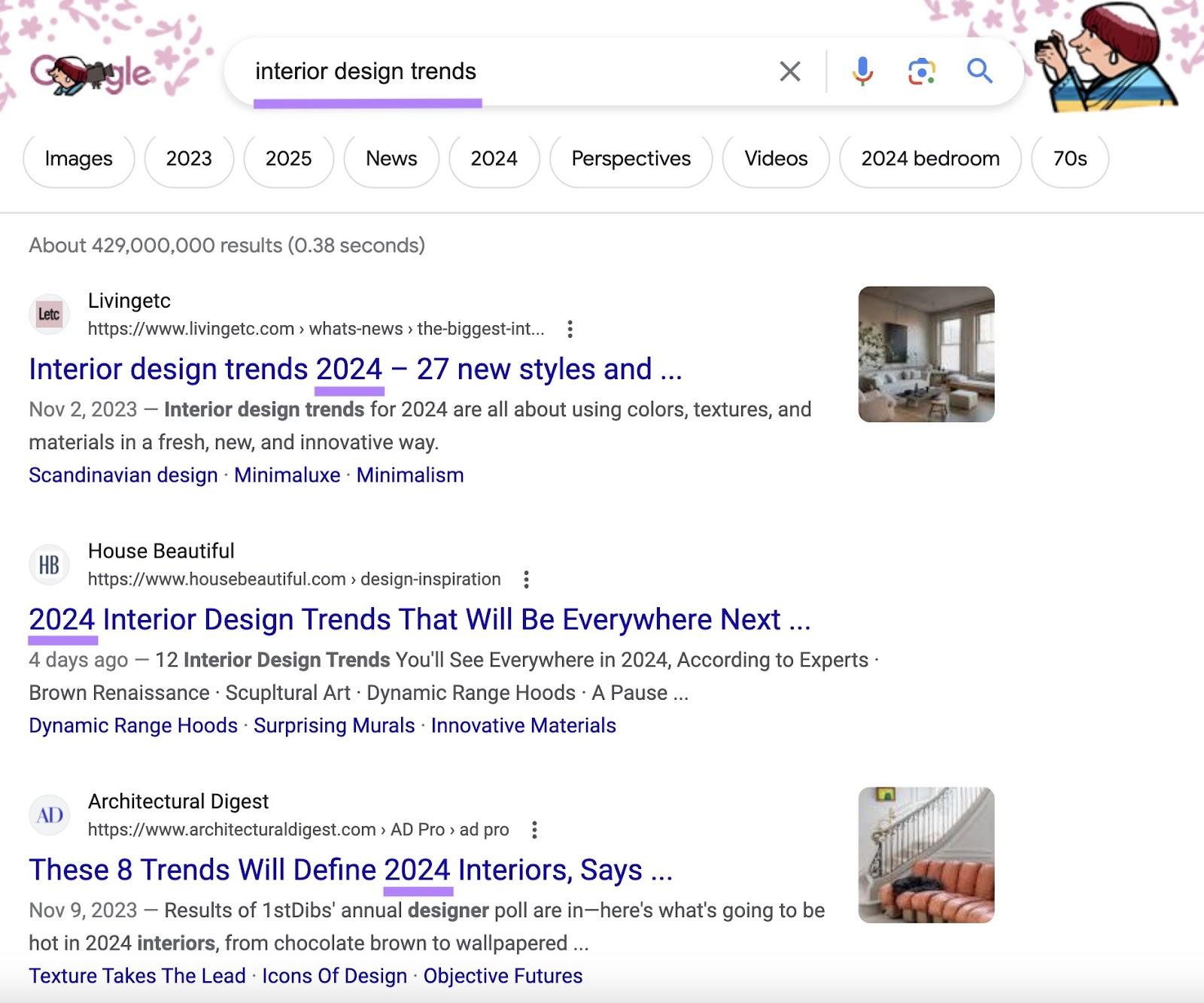
So, it’s probably a good idea to use the year in your title tag.
But you don’t want to make your titles too similar to competitors’. Try to craft a title that will stand out and capture users’ interest. So you’re more likely to get clicks.
Make Your Title Tag Similar to Your H1 Tag
The H1 tag (or heading one tag) should contain the main title that appears on the page.
Like this:

Because the title tag and H1 tag both act as page titles, they should overlap significantly.
This gives Google more confidence in your page’s topic. And prevents confusion for users.
Front-Load the Most Important Words
Generally, it’s helpful to keep the most “important” or unique words toward the start of your title tag.
❌ Bad example: Shop Online for the Latest Men’s Shoes
✅ How to fix it: Men’s Shoes | Shop the Latest Collection Online
This makes it easier for users to find the page they’re looking for in their browser tabs. And scan-read your result on the SERP.
Common Title Tag Mistakes
In some cases, a poorly written title tag can cause Google to display an entirely different title than the one you intended.
Unfortunately, there’s no guarantee that Google’s version will perform better.
And while Google’s rewrites won’t necessarily affect rankings, they may cause changes to your page’s CTR.
Some of the most common mistakes you might make when writing title tags include:
Missing <title> Element
If you don’t specify a title tag in your HTML code, you don’t have a title. In search results, Google will make up a title based on the page’s content.
To find missing title tags quickly, use Semrush’s Site Audit tool.
Then, head over to the “Issues” tab of your report and filter for “title” errors in the search bar.
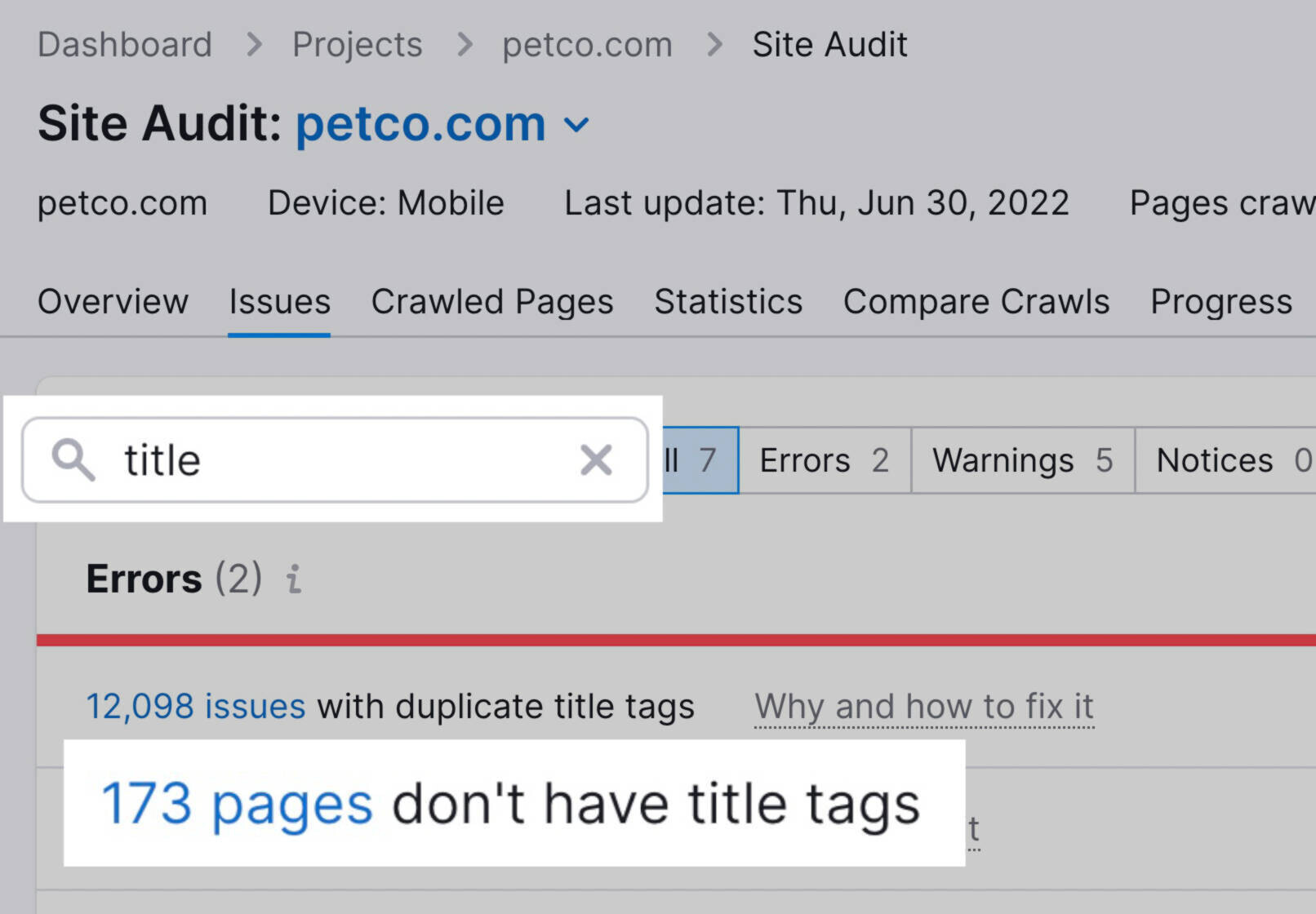
Click on the “# pages don’t have title tags” error to get a full list of pages with missing title tags.

Repetitive or Boilerplate Titles
Title tags are supposed to inform a user what kind of page they’re clicking on. If you try to use a specific template or repeat the same keywords every time, you’ll create a poor experience.
❌ Bad example: Best Dessert Recipes from Recipe.com | Peach Cobbler
✅ How to fix it: Peach Cobbler Recipe | Recipe.com
The corrected example focuses on keywords that are relevant only to that page.
If you’ve already run a site audit for missing titles, you can find a list of pages with duplicate titles in the same report.

Click on the “# issues with duplicate title tags” error to get a list of pages with the error.
Keyword Stuffing
Keyword stuffing is the process of unnaturally forcing keywords into content, in the hopes of ranking higher for them.
There’s no need to include the same or similar keywords multiple times in hopes of ranking.
Think like a user when writing titles. Focus on accurately and concisely describing your page with one or two keywords max.
❌ Bad example: Weighted Blankets, Cooling Blankets, Blankets for Anxiety, Blankets for Stress
✅ How to fix it: Weighted Blankets to Ease Stress & Anxiety
The corrected title is better because it doesn’t repeat itself. The “bad example” repeats several related keywords, which looks spammy and doesn’t inform the user about the content of your page.
Long Title Tags
Typically, Google shortens or rewrites title tags that are over 70 characters long.
Again, it’s best to keep title tags under 60 characters. This way, they’re less likely to get cut off on mobile or desktop.
❌ Bad example: Save hundreds on Stressless® recliners and sofas with our instant rebate offer – Ginger Jar Furniture
✅ How to fix it: Save on Stressless® Recliners and Sofas | Ginger Jar Furniture
Only include the most relevant information in your title tag. Everything else (e.g., instant rebates, save hundreds, etc.) can be added to your meta description, which may appear alongside your title in SERPs.
Non-Descriptive Text
Google does its best to serve users results that satisfy their search intent (the reason for their search). So, if you choose something vague like “Home Page” for your home page’s title, Google will probably update it to something more specific.
❌ Bad example: Travel Blog
✅ How to fix it: Traveling Solo as a Woman: My Life as a Travel Blogger
A travel blog simply titled “Travel Blog” doesn’t tell the Google algorithm or readers much what your site is about. Adding something unique about your site to your title tag will entice users to click.
For example, adding “traveling solo as a woman” tells readers more about who you are. This would match the search intent of a woman who wants to learn about traveling alone, but would not match the intent of, say, a family of four.
How to Review Your Website’s Title Tags
You can review your website’s title tags with Semrush’s On Page SEO Checker.
Import your pages and their target keywords to check whether:
- Target keywords are present in the corresponding title tags
- Title tags contain too many keywords
- Google is using your title tags in search results

The tool checks many other on-page SEO elements, too.
Its recommendations are based on analysis of top-ranking competitors. And SEO best practices.
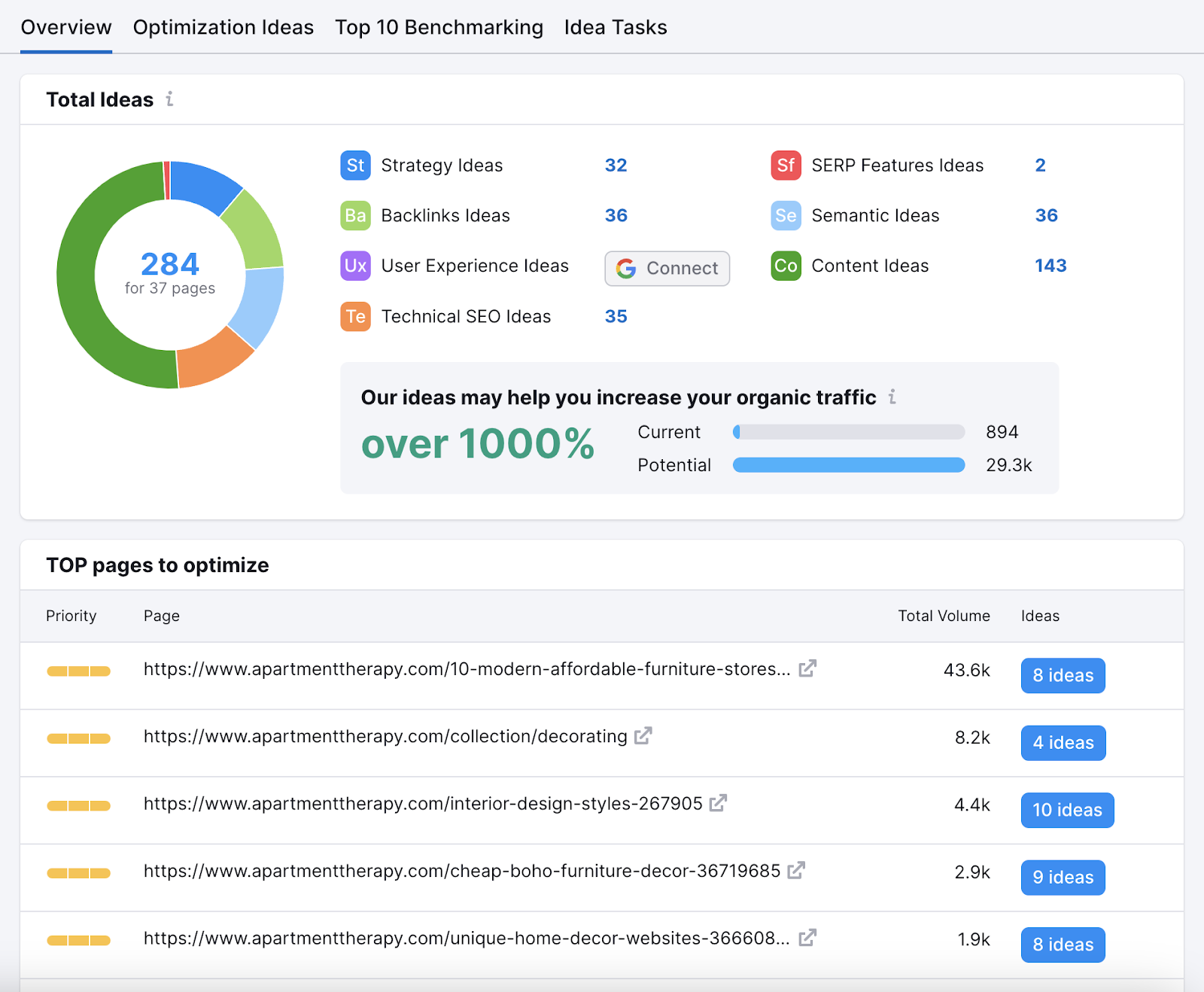
How to Update Your Title Tags
The most common way to update title tags is via a content management system (CMS).
For example, when you edit a page in WordPress with the Yoast SEO plugin installed, you’ll see a field like this:
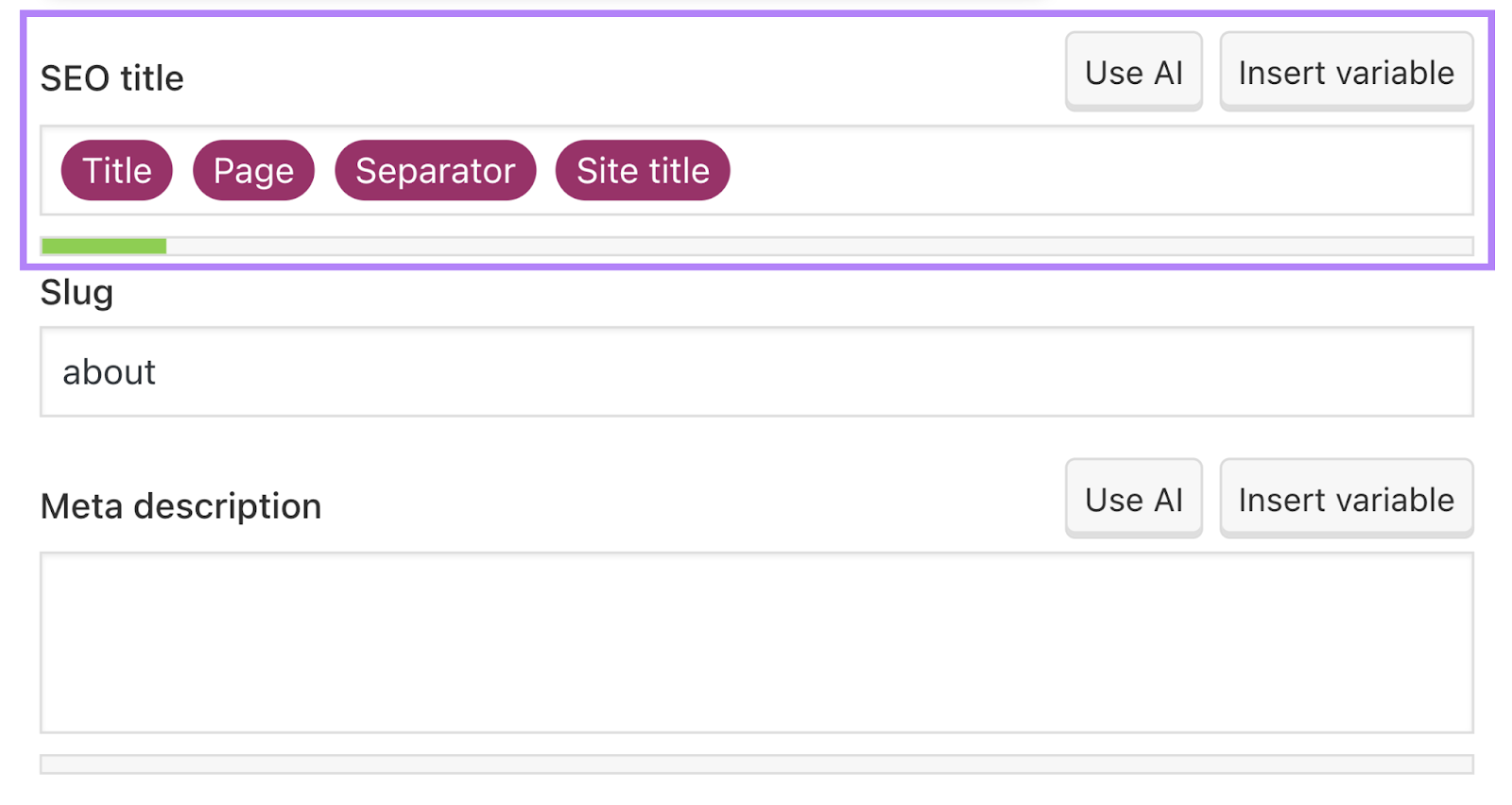
If not, you might be able to use a plugin to update the title HTML.
Alternatively, you can edit the page’s raw code. You’ll need to create a title tag like this:
<title>Insert title here</title>And insert it into the <head> section of the page’s HTML.
Keep Improving Your On-Page SEO
Optimizing webpages for search is about far more than title tag SEO.
Follow our on-page SEO checklist to ensure you don’t miss a thing.
Or get tailored recommendations with Semrush’s On Page Checker.
